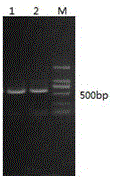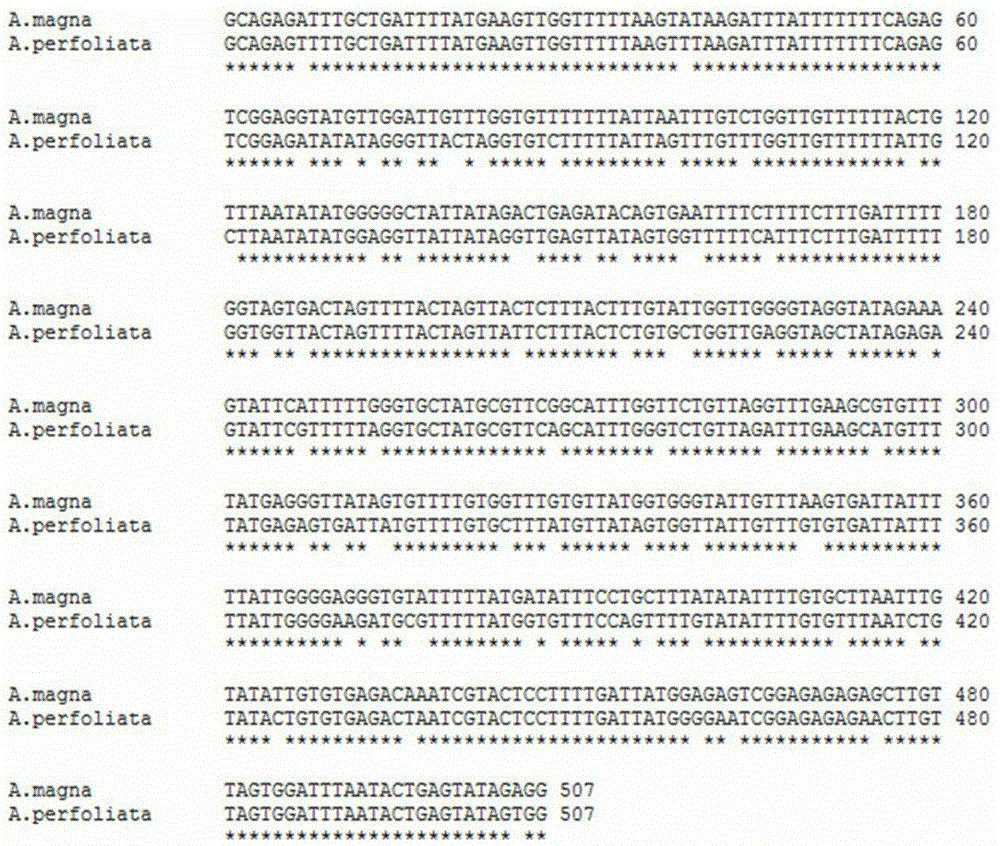Special primers and identification method for rapidly identifying anoplocephalidae tapeworms parasitizing on Equine
A technology of phyllocephalus and phyllocephalus, applied in biochemical equipment and methods, botanical equipment and methods, microbiological measurement/inspection, etc., can solve the problems of inability to infect insect species, diagnosis, inability to distinguish, etc.
- Summary
- Abstract
- Description
- Claims
- Application Information
AI Technical Summary
Problems solved by technology
Method used
Image
Examples
Embodiment 1
[0023] The steps of the method for quickly distinguishing the phyllocephalus parasitic in the genus Equus of the present invention are as follows:
[0024] 1. Sample collection: Collection of gestational proglottids (abbreviated as gestational segments): Taenia parasitic in the digestive tract are often excreted in whole gestational segmental segments. Larger segmental segments in feces are easy to find. For smaller ones, first collect the feces in the basin, add 5-10 times of water, stir evenly, let it stand for natural precipitation, then pour out the upper liquid, add fresh water, stir evenly, and repeat the operation until the upper liquid until clear. Finally, the supernatant was poured out, and the worms were looked for with the naked eye.
[0025] 2. Extraction of the DNA genome: Take about 20 mg of the proglottids prepared in step (1), transfer them into a mortar, and grind vigorously to form a homogenate. Add 350 μL of Buffer PBS (purchased from AXYGEN) and 0.9 μL o...
Embodiment 2
[0034] The difference between this embodiment and embodiment 1 is:
[0035] 1. Sample collection: egg collection: Take 10g of feces, add more than 100mL of water, stir into feces, filter through a 250μm copper sieve, collect the filtrate in a Erlenmeyer flask or beaker, let it settle for 20-40min, and pour off the upper layer. Keep the sediment, add water to mix, and then precipitate, and repeat the operation until the upper liquid is transparent, then pour off the upper liquid. Add 100mL of saturated brine, mix well, and let it stand for half an hour, then the eggs will float up. Pipette the liquid containing worms in the upper layer into another 50mL centrifuge tube, add PBS (pH7.2) to a total volume of 45mL, and centrifuge at 5000×g for 10min. The collected sediment is the eggs. In the prior art, sedimentation or floating methods are used to collect eggs, and the collected eggs can be used for microscope observation. In order to carry out differential diagnosis on the co...
PUM
 Login to View More
Login to View More Abstract
Description
Claims
Application Information
 Login to View More
Login to View More - R&D
- Intellectual Property
- Life Sciences
- Materials
- Tech Scout
- Unparalleled Data Quality
- Higher Quality Content
- 60% Fewer Hallucinations
Browse by: Latest US Patents, China's latest patents, Technical Efficacy Thesaurus, Application Domain, Technology Topic, Popular Technical Reports.
© 2025 PatSnap. All rights reserved.Legal|Privacy policy|Modern Slavery Act Transparency Statement|Sitemap|About US| Contact US: help@patsnap.com


